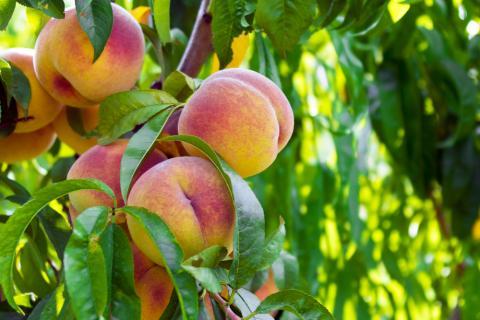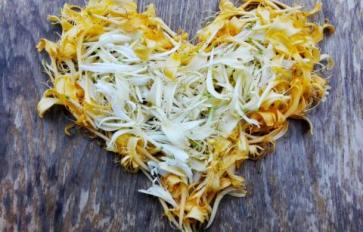
There’s nothing more heavenly than biting into a juicy peach, freshly plucked off the tree in your backyard. Here are some valuable tips on how to grow and care for your peach tree for a great harvest every year.
My beloved peach tree died after three years, after having given me two years of viable fruit. I missed the blossoms so much that I began to dig into where I went wrong with it and found all this information. I have a new tree now, young as it is, and have been diligently taking care of it. So from my house to yours—this is what you can do for your peach tree so that it can give you the best possible peaches for health and happiness!
Check the soil
We all study the basics of fertile soil in school—and we know that loamy soil (a mixture of both clayey and sandy soils) is the best to grow anything in, as long as there is plenty of manure and humus (rotting organic matter) in it. Add to this a pH balance of 6.5, decent irrigation, and good drainage, and the soil is ready to help support that peach tree in good health.
Prepare the soil as you would for any plant—rake and hoe, and remove any big stones that can interfere with the growth of a plant. Dig a big hole, enough for the roots to comfortably fit in without any crowding—and line the bottom with a little organic fertilizer like cow manure or homemade compost. The soil is ready and the hole in the ground is ready for your peach tree.
Planting the sapling
You need a one-year-old sapling from a trustworthy nursery or self-nurtured in a pot for it to be truly viable. Dust all the soil off the roots and check for a healthy root structure with a main tap root and many other secondary and tertiary roots around it. It should look like the root diagrams of science books have come to life. Some people advise that you soak the roots in some watery soil for 10-12 hours; personally, I didn’t dare to take the risk. I planted my tree in the hole I had prepared and filled it with soil straight from the well-watered pot to the ground.
Next, it’s good to clear off all the grass and weeds in a 3-foot circle around the tree—but owing to space limitation, I kept this to about a 2-foot circle. At this point, applying a 2-3 inch layer of mulch is a good idea to keep the weeds from growing as well as retaining moisture in the soil. Remember to pull weeds from the mulch if and when they sprout. Finally, once you have planted the tree, cut it back down to about 3-4 feet and trim any side branches for optimum growth.
Taking care of the tree & fruit
A young tree will need to be watered often during the growing season, and an established tree probably one a week. Make sure the soil is moist but not soggy and change your watering accordingly.
- When the buds turn green in spring, apply lime sulfur to reduce any occurrence of brown rot, which kills the fruit from inside out.
- Fertilize the tree once every month in the growing season, immediately after the tree blooms. Also, remember to water with every fertilizer application.
- When the peaches are about an inch in diameter, you need to thin them—meaning each peach should have a distance of at least 4-6 inches between it and another. This way, the fruit has space to grow and receives ample nutrition as well. If peaches jostle for space on your tree, the crop will be half as sweet. It may sound like an unnecessary waste, but you should always turn the wasted raw fruit into compost and give back to the soil what you took from it so the fruit you thin out doesn’t really get “wasted.”
- Keep a lookout for any signs of disease—any cankers or growths on the branches, leaf damages, and even spoiled fruit. Remove the diseased part of the tree to stop the spread. When the tree fruits, you cannot apply any pesticides to it—that renders the fruit toxic and unusable.
- Harvest mature peaches on the tree instead of plucking them raw and then ripening them. When the peach changes from a green to peachy yellow, and is slightly soft to touch, it’s done. Don’t pull the peach off the tree, but gently hold and twist it to pluck.
- Once harvest is over, clear off any peaches from or around the tree because the rotting fruit and leaves can cause peach scab, which will effectively kill your tree.
- When the tree goes dormant and barren, it’s time to prune. Cut off dead branches first and then begin to de-crowd the tree. Remove any crisscrossing branches and cut away about half of the previous year’s growth of branches. Don't worry if it looks a little denuded; it is supposed to be like that.
- Now is the time to prevent any disease. A winter application of fixed copper will fight off any leaf curl, while dormant oil protects it from other harmful pests as well.
If all this is done diligently, your peach tree will bloom with healthy, luscious fruits. And there is plenty you can do with a bumper peach harvest other than just eating the fruit.








